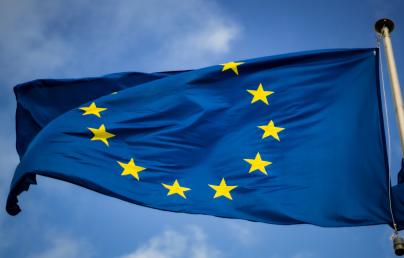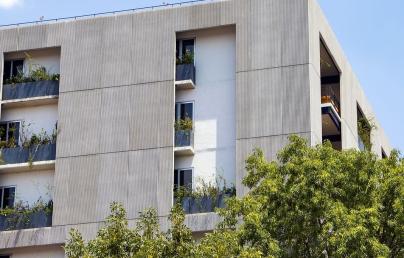Making Heating and Cooling Sustainable – Barriers, Solutions and Best Practices

Making Heating and Cooling Sustainable – Barriers, Solutions and Best Practices
The European project REPLACE explored the challenges and solutions associated with switching to more sustainable options for heating and cooling.
In order to support the decarbonisation of the heating and cooling (HC) sector the best solutions are sought for the introduction of renewable energy technologies, to replace inefficient fossil fuel appliances with more efficient ones using biomass, solar, heat pumps, geothermal energy or a connection to district heating (and cooling) systems. The transition to renewable energy sources is based on the information, education and motivation of citizens, owners of fossil fuels stoves and boilers, but also on the promotion of sustainable green technologies.
However, the transition process is not easy because of the barriers generated by social differences, long-life and often inefficient equipment (lock-in effect), tenant-landlord challenges, existing legislation, technical regulations, inadequate financial instruments and shortage of qualified craftsmen or insufficiently developed market structures in the field of renewable energy systems.
Legislative and regulatory acts often focus on broader sectoral, e.g. social, aspects and therefore do not place a primary focus on advancing decarbonisation. As a result, some solutions that are generally good and needed, e.g. rent limits, tend to cause severe barriers for the use of renewable energy and the implementation of measures that accelerate the transition to renewable heating and cooling (RHC).
A particularly complex problem in this context is related to multi-family buildings to which the Housing Law applies. Possible barriers are the legal status of the housing community and the way decisions are made about common parts of a building and joint installations.
When considering the motivation to invest in energy efficiency measures and renewable energy technologies, a common barrier in many countries is the conflict of interest between flat owners and tenants. It is the responsibility of the homeowner to maintain the buildings so that the housing conditions are appropriate. However, homeowners who rent their apartments are not motivated to invest in energy efficiency, unless they have to do so under the requirement of legislation or mandatory measures that promote renewable energy, because traditional technologies that use fossil fuels are cheaper in terms of up-front costs while renewable systems require a high one-off investment.
As the running costs (that would be lower for renewable energy based systems than for fossil fuelled) are paid by the tenants, the full costs of heating or informed decisions, respectively, are not a matter of the homeowners’ decision-making. This is a significant barrier that can however be overcome with incentives and/or fair cost-rollover models, also including e.g. heat or performance contracting models, where rents despite a comprehensive building shell and/or heating equipment refurbishment do not necessarily have to rise more than if the existing system is retained (as cost savings are used for financing investments).Other possible solutions are binding regulatory standards or obligations from state or local governments.
Condominiums can also pose a challenge because homeowners often form a community in a building. The complicated procedure and high quota entailed by a qualified majority make decision-making difficult. A qualified majority means in some cases the votes of 50% of the members of the residential community to an absolute consensus of 100% of the votes. Dissatisfied members of the community can always seek judicial or extrajudicial arbitration, the outcome of which may be to the detriment of the proactive part of the community.
Often, arbitration does not take into account the fact that energy efficiency or the use of renewable energy is a public interest. For example in Serbia, a serious barrier is represented by certain provisions of the Consumer Protection Law, which put energy services, efficient use of energy and the use of renewable energy with trade in goods and services in the general sense. A common outcome of arbitration in the application of this Act is to favour the interests of the individual to the detriment of the community in which the individual belongs.
Money raised through reserve funds for building maintenance is often not sufficient to implement energy efficiency and renewable energy measures. A common solution for this are energy service contracts, when an energy service company invests in implementing energy efficiency measures and renewable energy systems. This model is frequently applied to larger buildings in Austria, but is also recognised in other countries. In Spain, Bulgaria and Serbia, this model is most commonly used in the public sector. A variant of this Energy Performance Contracting model is applied in Croatia, where savings are contracted to finance energy efficiency measures and the implementation of a renewable energy system.
Some technical requirements represent barriers to the use of renewable energy, such as fire protection requirements, which do not always take into account the significant progress made in the field of technical solutions, and especially when it comes to biomass boilers, which limit their use. More stringent requirements for device efficiency, emissions and frequency of inspections in some countries currently are barriers related to the application of biomass boilers, as well as some requirements for the spatial planning of the parcels and the surface to be provided for heat sources and biomass storage facilities (Austria, Croatia) do not encourage citizens to opt for such solutions.
However, one examples of good practice is the legislation in the State of Baden-Wuerttemberg (Germany), where there is an obligation for new buildings with regard to the share of renewable energy - minimum solar energy share 15%, gaseous biomass 30%, liquid and solid biomass 50%. This Federal Renewable Heat Act (EWärmeG BW) imposes a minimum renewable energy ratio of 15%. Whereas another German federal state (Bavaria), for example, has worked on the promotion of district heating systems, providing advice, model contracts and easing legal processing when installations use municipal ground.
The project REPLACE has analysed all these barriers and proposed solutions in Austria, Germany, Spain, North Macedonia, Bulgaria, Croatia, Bosnia and Herzegovina, Slovenia and Serbia. Read more about this here.
Project Coordinator: Austrian Energy Agency – AEA
making-heating-and-cooling-sustainable-barriers-solutions-and-best-practices.pdf
English (1.55 MB - PDF)

